Learn the art of traditional kumihimo weaving at Kumi no Sato.
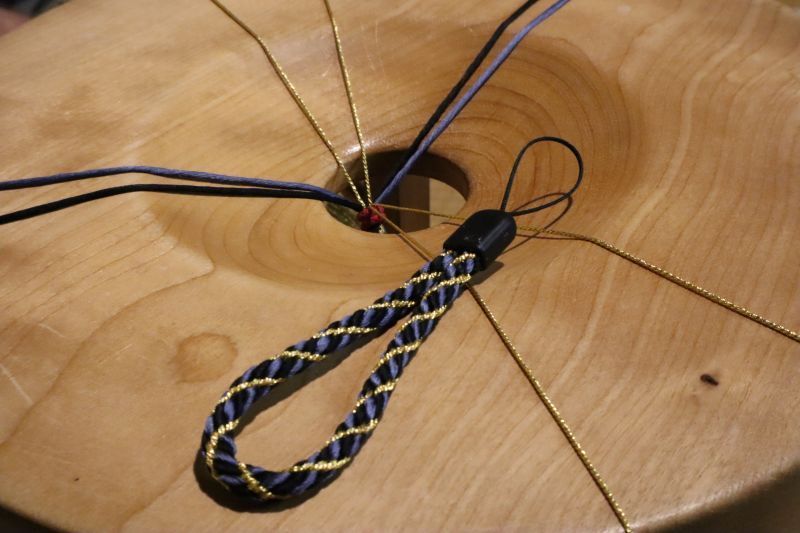
Kumihimo are traditional crafts that are made by braiding dyed silk thread into beautiful accessories. The colorful braids were historically used to fasten the obi (sash wrapped around the waist) of a kimono and as accessories on samurai armor. The majority of kumihimo are now produced in the Iga region of Mie Prefecture and they are appropriately known as Iga kumihimo. In 2016, kumihimo appeared in the famous Japanese film, “Your Name”, which revived the craft’s popularity. At Kumi no Sato in Iga, visitors can make their own kumihimo bracelet or keychain to take home as a special keepsake from their visit.
About the Author:
I live in Gifu, Japan with my family. When I had the opportunity to travel to Mie and try some new experiences, I was able to gain a better understanding of Japanese culture.
I have always been interested in traditional Japanese crafts and had seen photos of colorful kumihimo online. When I was visiting Iga, I thought the chance to make my own accessories and learn how to do this ancient craft would be a wonderful cultural experience. The kumihimo experience at Kumi no Sato looked like it would be fun and I was keen to make a unique souvenir with my own hands.
The nearest station to Kumi no Sato is Uenoshi Station, which is very close to the grounds of Iga Ueno Castle. From the station it was only about a five minute walk to Kumi no Sato and the building was easy to recognize thanks to the large red banner outside.
As soon as you enter the building you can see the arts studio where the kumihimo are made. The floor is covered in traditional tatami mats and there are numerous wooden marudai stands, which are the traditional round frames used when weaving the silk thread to make the kumihimo.
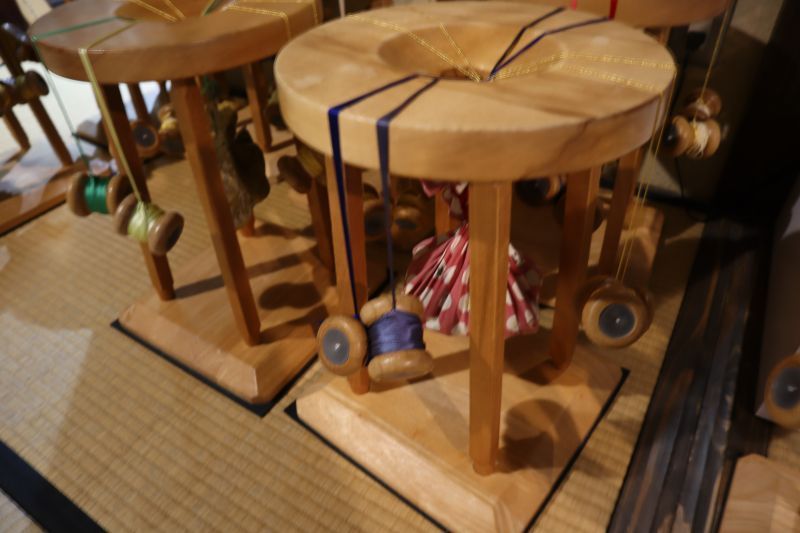
The process of making kumihimo is to braid colorfully dyed thread into accessories using a marudai stand. The decorative braids were commonly used to secure an obi in place on a kimono. The history of the Iga kumihimo has been traced back to over 1,300 years ago and Iga is the area considered to be the center of kumihimo production.
The earliest known use of the braids was on earthenware pottery from the Jomon Period (about 1000 BCE) earthenware pottery, which was decorated with a two-thread braid and a rotary stamping pattern of three or more braided threads. In the Nara Period(710-794), new techniques for making kumihimo were shared around Japan alongside the spread of Buddhism as it was used to accentuate the scriptures of the belief system. Some of the ancient strings were also used as decoration on an instrument called a "kugo" which was left at the Shosoin Temple in Nara.
During the Heian Period(794-1185), kumihimo colors and designs became more refined and delicate. They were used for bundle belts and were an important adornment on the costumes of dynasty nobles. In the Kamakura Period(1185-1333), the braids became a common accessory on samurai armor and more subdued colors were used. Later in the Muromachi Period(1336-1573), the decorative braids were often used in tea ceremonies and flower arrangement.
In the early Edo Period(1603-1868)), the demand increased rapidly as the kumihimo were used as decorations on sword handles. As a result, craftsmen of the natural armor accessories resided in the capital city of Edo(now Tokyo) under the protection of the shogunate and competed to achieve the best braiding techniques.
In the late Meiji Period, people wanted to revive the use of this braid as part of Japanese culture. Around this time, the kimono obi took on the current shape and kumihimo were used to secure the obi in place, causing the colourful braids to become popular among the common people.
When it was time for me to start the kumihimo making experience, I was a bit nervous because the process looked challenging. At first, it was a little difficult, but my teacher was able to show me the proper technique and I was soon able to braid smoothly.
The trick was to understand how to use the marudai stand properly and the brilliance of its design is something special. The weight of each spool creates enough tension in the thread to make it possible to weave a tight braid.
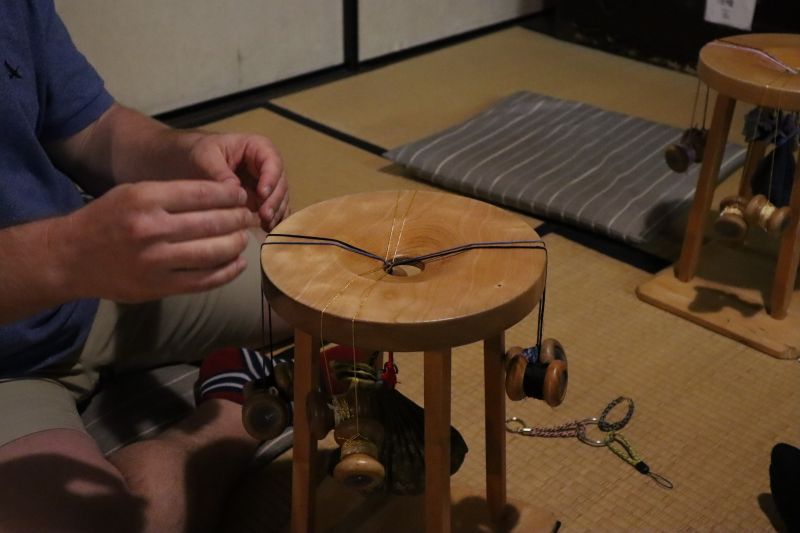
Because we were so close to Iga Ueno Castle, I decided to use the royal color of purple. The second color I selected was royal blue to maintain the regal design of my kumihimo. The third and final color of thread I selected was a shiny gold. I felt that this combination of colors would allow me to weave a stunning bracelet or phone string fit for an emperor.
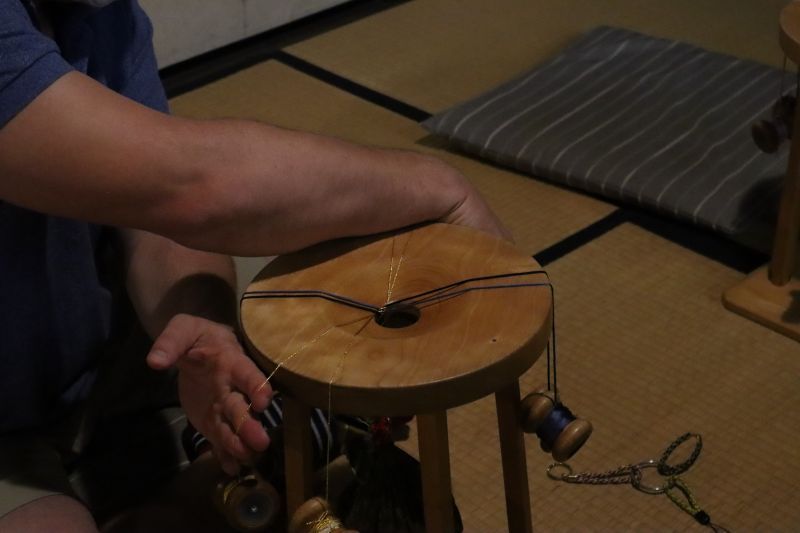
Even though I found the technique difficult to master at the beginning, my teacher’s patience and expertise helped me to learn quickly. I was soon weaving smoothly and my braid began to take shape right before my eyes. It felt wonderful to learn an ancient skill and make something with my own two hands.
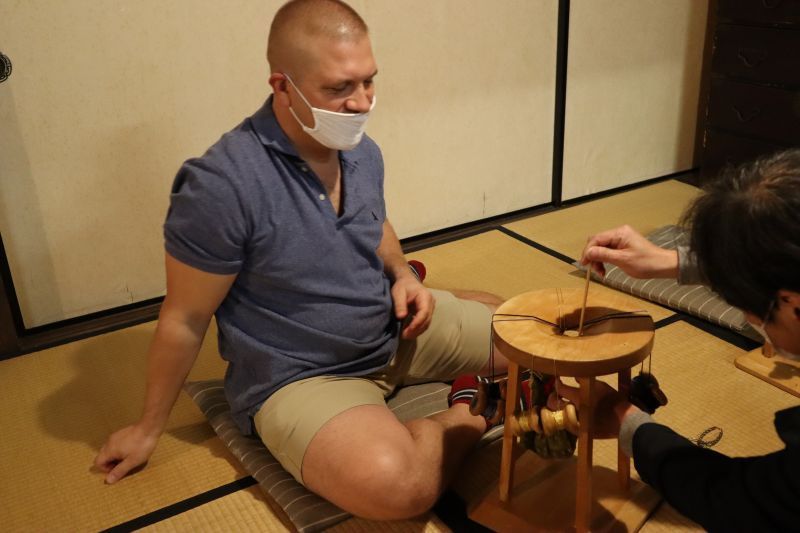
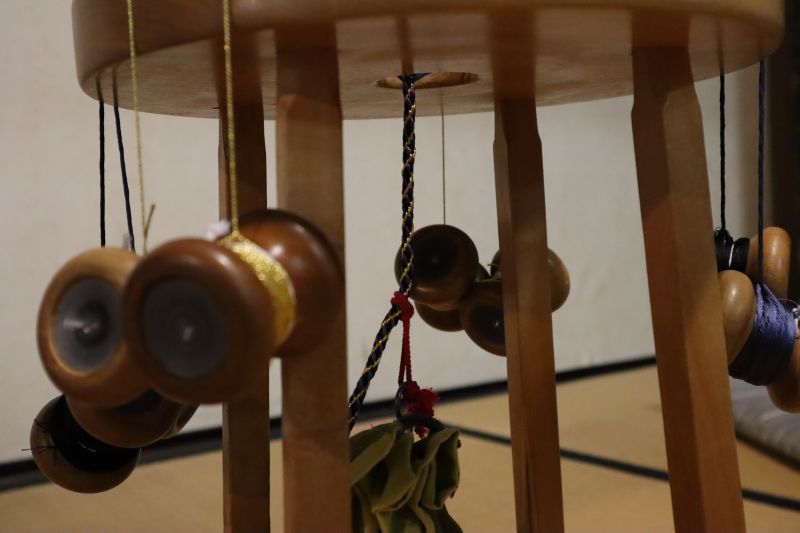
Learning the traditional process allowed me to truly appreciate the skills of the artisans of the past who made the beautiful kumihimo. I was amazed by the design of the marudai and how the natural weight of the spools pulling the threads tight made it possible to weave them together to create a braid. It was a pleasure to have a hands-on experience that allowed me to create something in the same way it had been done for hundreds of years.
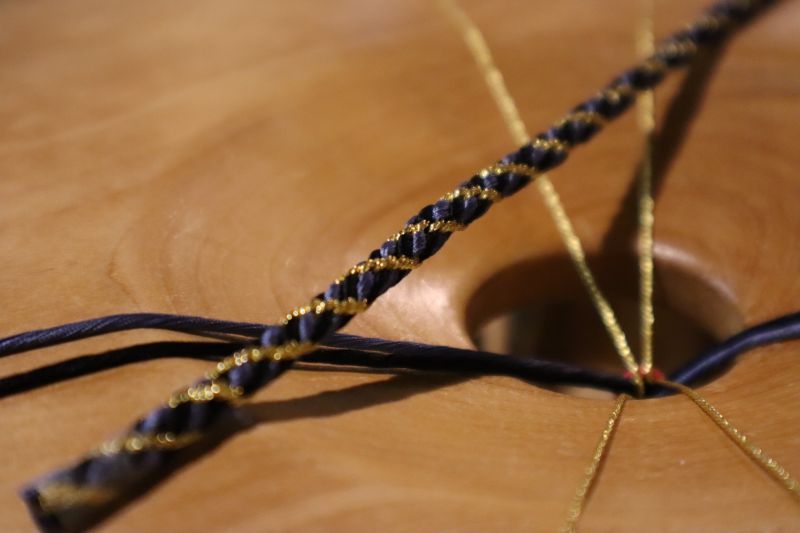
When I was finished making my kumihimo, I could fully appreciate how much work goes into making these traditional crafts. My braid was beautiful and I felt a strong sense of pride in my workmanship.
I was also glad to know that this unique Japanese traditional craft has a place in modern Japan. Learning about the history of kumihimo and knowing that samurai and nobles had used them as decorations and with kimono, it made me feel good to continue the tradition in some small way by making a personal accessory.
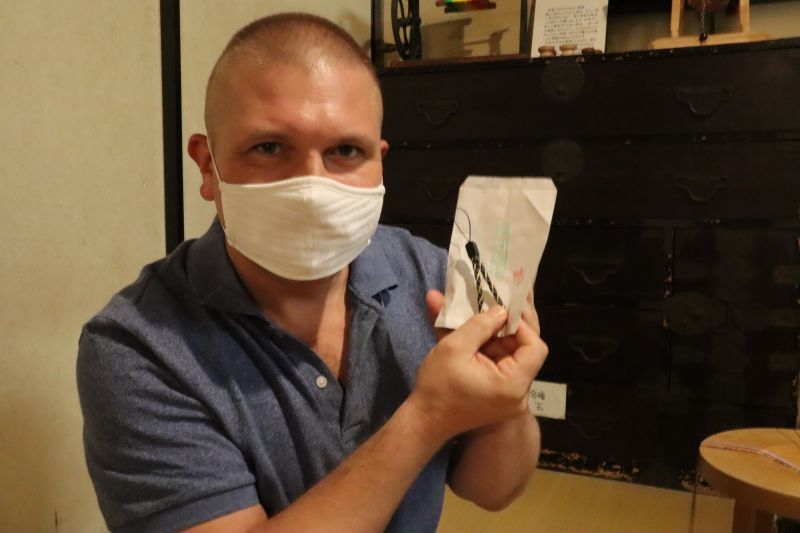
Caption: I was proud of my unique braided accessory.
The process of making my braid took about 20 minutes, and my final keepsake was a phone accessory. My teacher also showed me the proper technique for joining the ends of my kumihimo to seal it and then provided me with a bag so I could give it to someone as a gift.
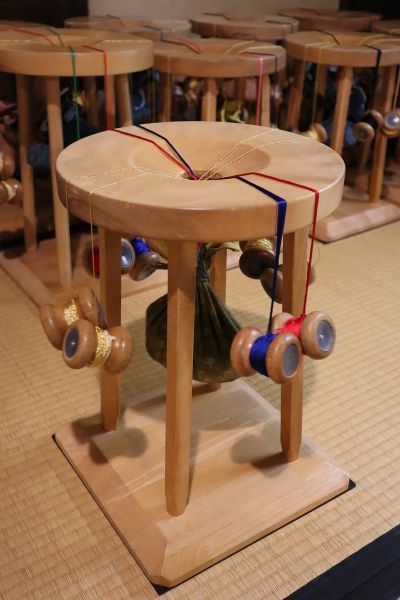
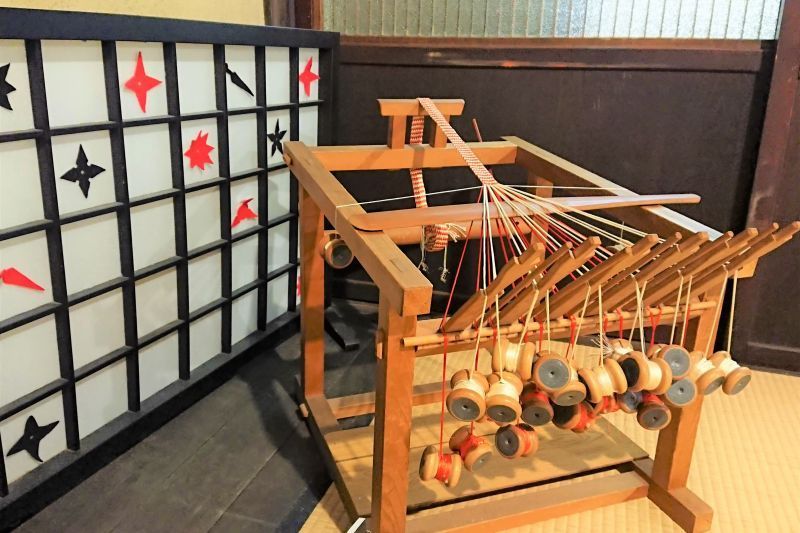
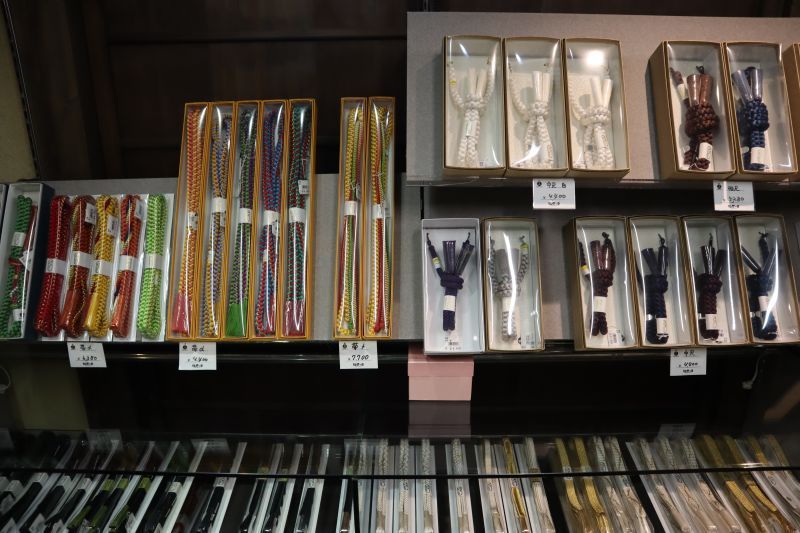
After learning how to make the kumihimo with my own hands, it was very interesting to see all of the styles and products on display. Some of the more interesting items available for purchase were the neckties made from kumihimo. The ties were quite unique and I had never seen anything like them before.
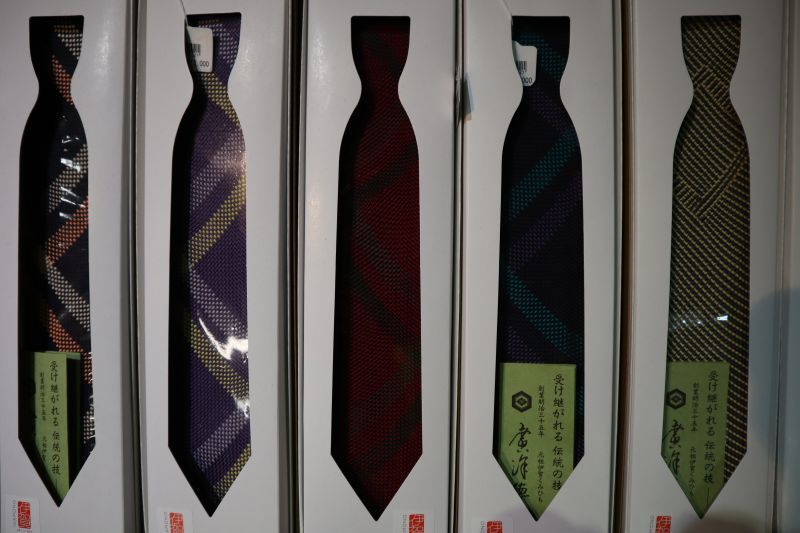
Each color combination and the different thicknesses and styles of the kumihimo result in products that each has their own unique character. There were many items that caught my eye and would make great souvenirs for friends and family members.
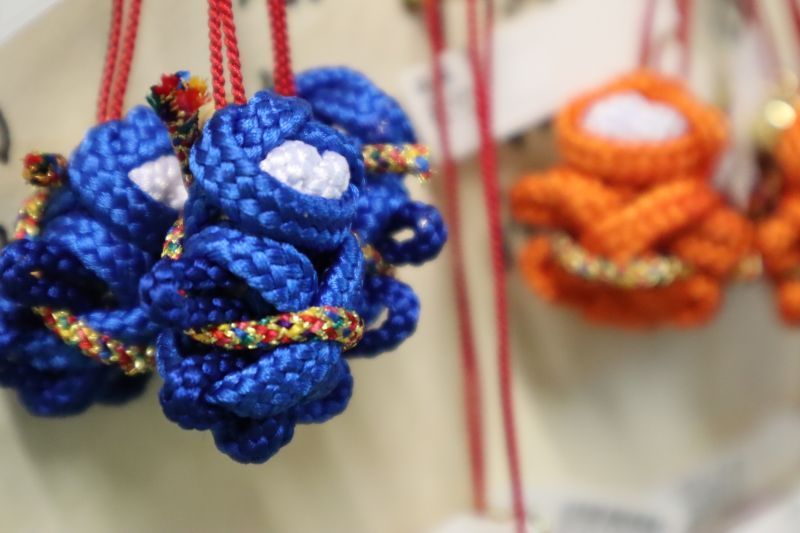
Everywhere you go in Iga, you will find ninja. Kumi no Sato was no exception and there were some cute ninja inspired designs made from brightly colored kumihimo. There were so many creative ways to use the braids for different accessories and I could appreciate the artistry of the local craftsmen.
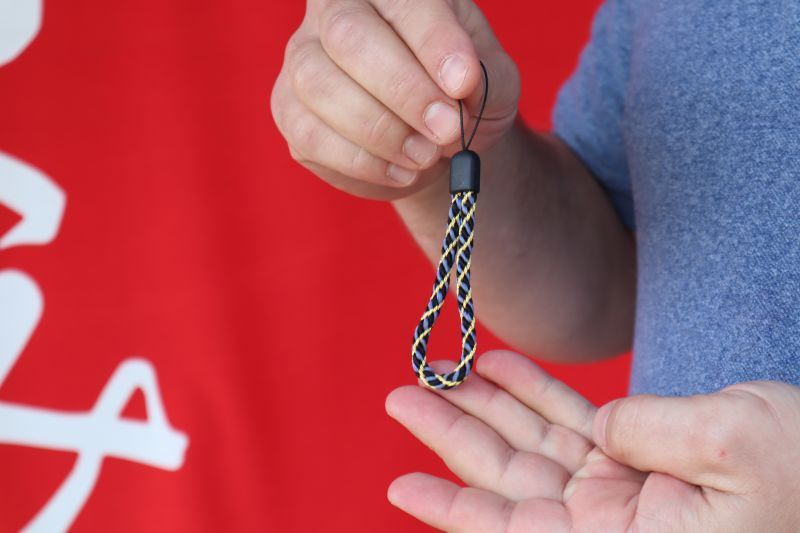
Thanks to my friendly and talented teacher, I was able to leave Kumi no Sato with a wonderful keepsake. It had been an interesting and fun experience to learn the ancient art of making kumihimo in Iga.
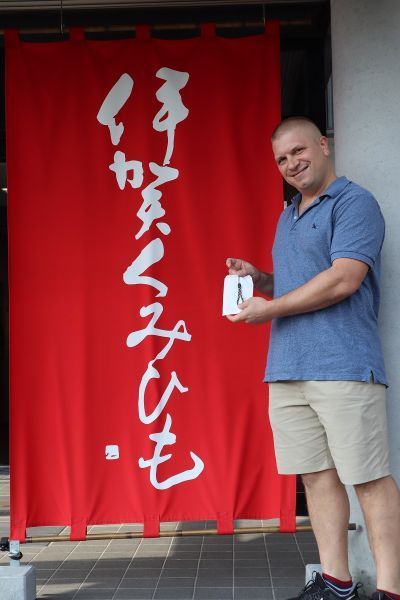
A visit to Kumi no Sato gives tourists the opportunity to learn an ancient craft and make their own souvenir to take home. The teachers in the workshop are helping to ensure that the traditional techniques are carried on and shared with people from all over the world. Any trip to Iga will be better if you take the time to experience the art of making kumihimo.